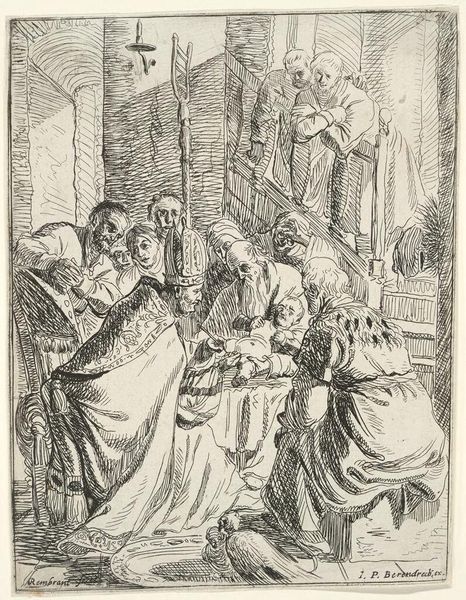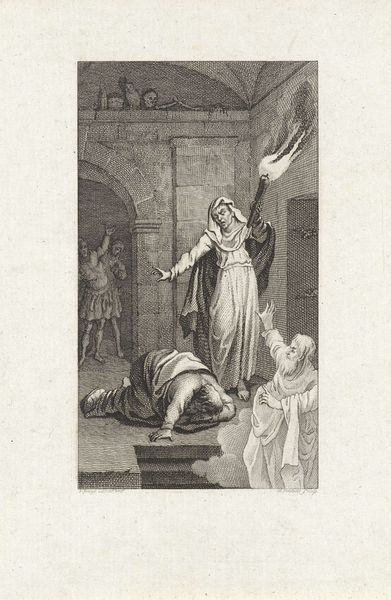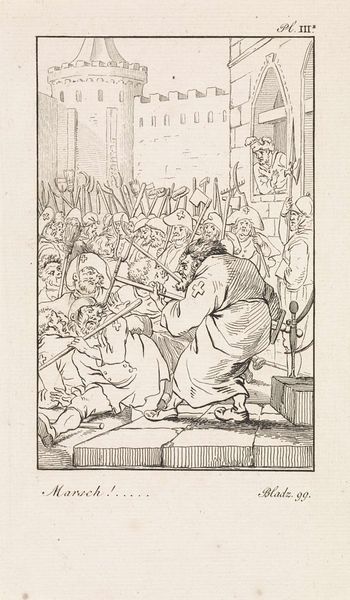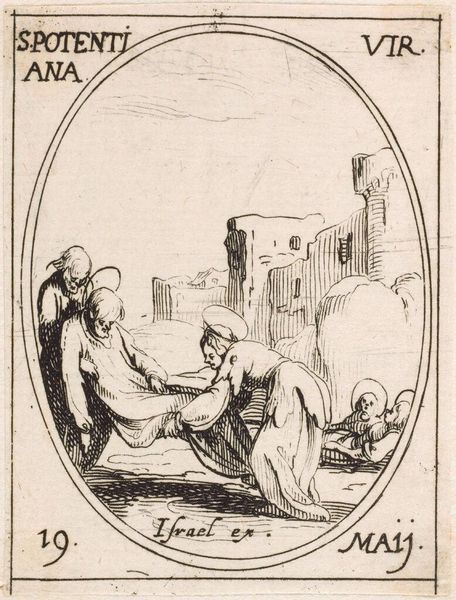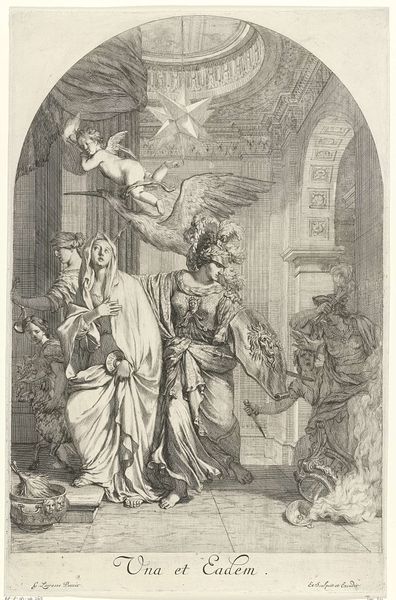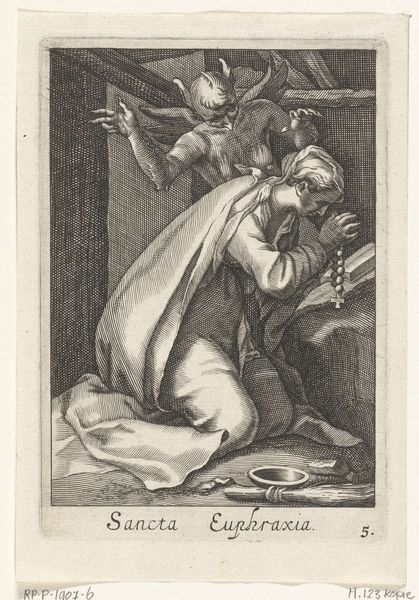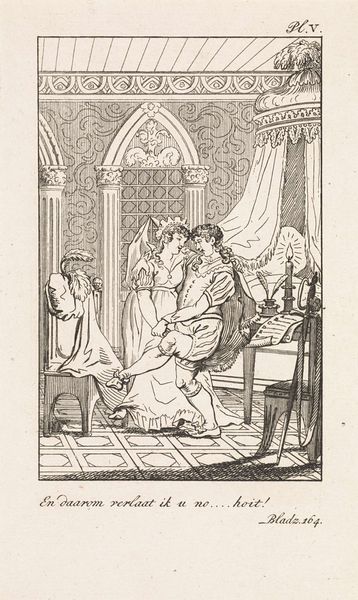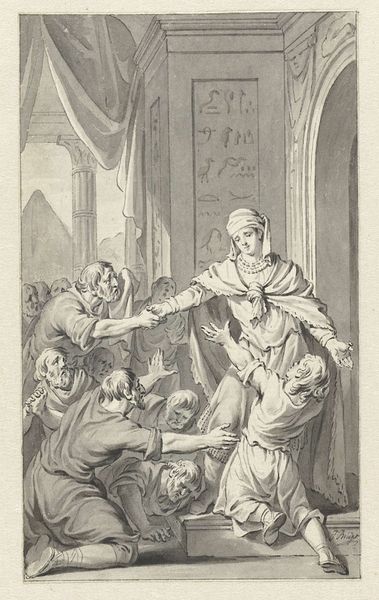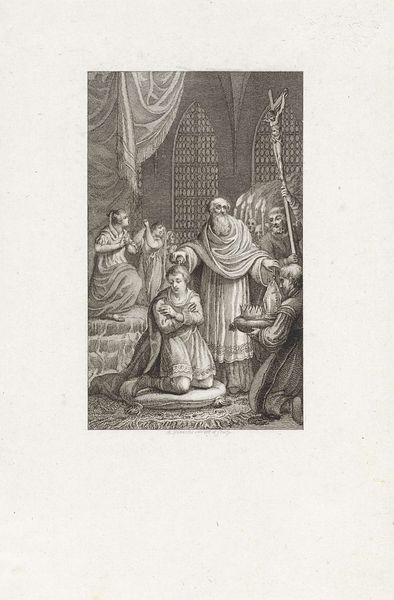
drawing, print, engraving
#
drawing
#
narrative-art
# print
#
figuration
#
romanticism
#
genre-painting
#
engraving
Dimensions: height 198 mm, width 116 mm
Copyright: Rijks Museum: Open Domain
Curator: Daniël (I) Veelwaard created this print, "Vallende geestelijke en een man met een brief," sometime between 1802 and 1809. It's an engraving on paper. Editor: It’s so dramatic! The exaggerated lines and the chaotic composition give it a theatrical, almost farcical feel. The crashing figure is a wonderfully awkward jumble of limbs. Curator: Precisely. This reflects the Romantic period’s fascination with the dramatic and the emotional. The toppling cleric, presumably startled by the letter-bearing man, provides a strong narrative element, a little scene frozen in time. It reflects genre painting where everyday scenes reflect societal morals and norms. Editor: What’s fascinating to me is the suggestion of power overturned, even mocked. Consider the cleric, literally brought low—deskewed by an event, his papers scattered. What statements were being made, then, about established authority and religion, and who was Veelwaard’s audience? Curator: Well, prints were often more accessible to a wider audience than paintings, so the message, whatever it may be, had broader reach. This particular piece, situated in the Rijksmuseum, reminds us of the shifting socio-political landscape of the time. Anti-clerical sentiments were growing and this engraving engages with those debates, no doubt fueling them further. Editor: Right, this feels very aligned with movements pushing back against the status quo, not just in religious contexts, but social structures as well. It brings to mind feminist theory – like, whose story is deemed worthy of memorialization in artistic records? Who writes history, or engraves it, in this case? Curator: Those are critical questions. By considering it through that lens, we also understand the potential for subversion, even in seemingly straightforward narrative art. Editor: I agree. It reminds me that art, regardless of its era, always exists within—and comments on—the prevailing power dynamics of its time. Curator: And as historians, our role is to uncover and illuminate those very power structures that shape the works and their receptions. Editor: Yes, encouraging viewers to challenge assumptions and recognize the complex layers of history embedded within an image like this.
Comments
No comments
Be the first to comment and join the conversation on the ultimate creative platform.



